Nvidia GeForce GTX 750 vs Nvidia GeForce GTX 1050 Ti Benchmarks, Specs, Performance Comparison and Differences
|
|
|
|
|
Nvidia GeForce GTX 750 vs Nvidia GeForce GTX 1050 Ti
Comparison of the technical characteristics between the graphics cards, with Nvidia GeForce GTX 750 on one side and Nvidia GeForce GTX 1050 Ti on the other side. The first is dedicated to the desktop sector, it has 512 shading units, a maximum frequency of 1,1 GHz, its lithography is 28 nm. The second is used on the desktop segment, it includes 768 shading units, a maximum frequency of 1,4 GHz, its lithography is 14 nm. The following table also compares the boost clock, the number of shading units (if indicated), of execution units, the amount of cache memory, the maximum memory capacity, the memory bus width, the release date, the number of PCIe lanes, the values obtained in various benchmarks.
Note: Commissions may be earned from the links above.
This page contains references to products from one or more of our advertisers. We may receive compensation when you click on links to those products. For an explanation of our advertising policy, please visit this page.
Specification comparison:
| Graphics card | Nvidia GeForce GTX 750 | Nvidia GeForce GTX 1050 Ti | ||||||
| Market (main) | Desktop | Desktop | ||||||
| Release date | Q1 2014 | Q4 2016 | ||||||
| Model number | GM107-300-A2 | GP107-400-A1 | ||||||
| GPU name | GM107 | GP107 | ||||||
| Architecture | Maxwell | Pascal | ||||||
| Generation | GeForce 700 | GeForce 10 | ||||||
| Lithography | 28 nm | 14 nm | ||||||
| Transistors | 1. 870.000.000 870.000.000 |
3.300.000.000 | ||||||
| Bus interface | PCIe 3.0 x16 | PCIe 3.0 x16 | ||||||
| GPU base clock | 1,02 GHz | 1,29 GHz | ||||||
| GPU boost clock | 1,09 GHz | 1,39 GHz | ||||||
| Memory frequency | 1.253 MHz | 1.752 MHz | ||||||
| Effective memory speed | 5 GB/s | 7 GB/s | ||||||
| Memory size | 1 GB | 4 GB | ||||||
| Memory type | GDDR5 | GDDR5 | ||||||
| Memory bus | 128 Bit | 128 Bit | ||||||
| Memory bandwidth | 80,2 GB/s | 112,1 GB/s | ||||||
| TDP | 55 W | 75 W | ||||||
| Suggested PSU | 300W ATX Power Supply | 300W ATX Power Supply | ||||||
| Multicard technology | — | — | ||||||
| Outputs |
2x DVI |
1x DVI |
||||||
| Maximum GPU Temperature | 95°C | 97°C | ||||||
| Cores (compute units, SM, SMX) | 4 | 6 | ||||||
| Shading units (cuda cores) | 512 | 768 | ||||||
| TMUs | 32 | 48 | ||||||
| ROPs | 16 | 32 | ||||||
| Cache memory | 2 MB | 1 MB | ||||||
| Pixel fillrate | 17,4 GP/s | 44,5 GP/s | ||||||
| Texture fillrate | 34,7 GT/s | 66,8 GT/s | ||||||
| Performance FP32 (float) | 1,1 TFLOPS | 2,1 TFLOPS | ||||||
| Performance FP64 (double) | 34,7 GFLOPS | 66,8 GFLOPS | ||||||
| Amazon | ||||||||
| eBay |
Note: Commissions may be earned from the links above.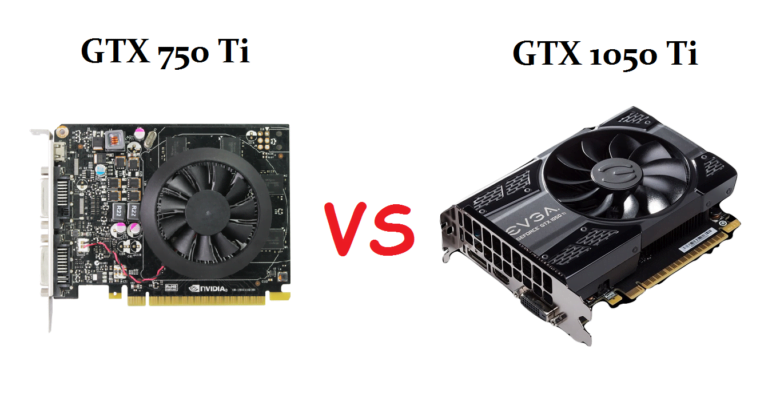
Price: For technical reasons, we cannot currently display a price less than 24 hours, or a real-time price. This is why we prefer for the moment not to show a price. You should refer to the respective online stores for the latest price, as well as availability.
We can better compare what are the technical differences between the two graphics cards.
Performance comparison with the benchmarks:
Performance comparison between the two processors, for this we consider the results generated on benchmark software such as Geekbench 4.
| FP32 Performance in GFLOPS | |
|---|---|
| Nvidia GeForce GTX 1050 Ti |
2.138 |
| Nvidia GeForce GTX 750 |
1.111 |
The difference is 92%.
Note: Commissions may be earned from the links above. These scores are only an
average of the performances got with these graphics cards, you may get different results.
Single precision floating point format, also known as FP32, is a computer number format that typically occupies 32 bits in PC memory. This represents a wide dynamic range of numeric values that employs a floating point.
See also:
Nvidia GeForce GTX 750 Ti
Nvidia GeForce GTX 1050 Ti Max-QNvidia GeForce GTX 1050 Ti Mobile
Equivalence:
Nvidia GeForce GTX 750 AMD equivalentNvidia GeForce GTX 1050 Ti AMD equivalent
Disclaimer:
When you click on links to various merchants on this site and make a purchase, this can result in this site earning a commission. Affiliate programs and affiliations include, but are not limited to, the eBay Partner Network.
As an Amazon Associate I earn from qualifying purchases.
This page includes affiliate links for which the administrator of GadgetVersus may earn a commission at no extra cost to you should you make a purchase. These links are indicated using the hashtag #ad.
These links are indicated using the hashtag #ad.
Information:
We do not assume any responsibility for the data displayed on our website. Please use at your own risk. Some or all of this data may be out of date or incomplete, please refer to the technical page on the respective manufacturer’s website to find the latest up-to-date information regarding the specifics of these products.
NVIDIA GeForce GTX 1050 3 GB vs NVIDIA GeForce GTX 750 v2
Comparative analysis of NVIDIA GeForce GTX 1050 3 GB and NVIDIA GeForce GTX 750 v2 videocards for all known characteristics in the following categories: Essentials, Technical info, Video outputs and ports, Compatibility, dimensions and requirements, API support, Memory.
Benchmark videocards performance analysis: GFXBench 4.0 — Car Chase Offscreen (Frames), GFXBench 4.0 — Car Chase Offscreen (Fps), GFXBench 4.0 — Manhattan (Frames), GFXBench 4.0 — Manhattan (Fps), GFXBench 4.0 — T-Rex (Frames), GFXBench 4./s.glbimg.com/po/tt2/f/original/2017/11/22/captura_de_tela_2017-11-22_as_18.12.00.png) 0 — T-Rex (Fps), PassMark — G2D Mark, PassMark — G3D Mark.
0 — T-Rex (Fps), PassMark — G2D Mark, PassMark — G3D Mark.
NVIDIA GeForce GTX 1050 3 GB
Buy on Amazon
vs
NVIDIA GeForce GTX 750 v2
Buy on Amazon
Differences
Reasons to consider the NVIDIA GeForce GTX 1050 3 GB
- Videocard is newer: launch date 2 year(s) 6 month(s) later
- Around 34% higher core clock speed: 1392 MHz vs 1038 MHz
- Around 28% higher boost clock speed: 1518 MHz vs 1188 MHz
- A newer manufacturing process allows for a more powerful, yet cooler running videocard: 14 nm vs 28 nm
- Around 40% higher memory clock speed: 7008 MHz vs 5012 MHz
- Around 71% better performance in GFXBench 4.0 — Car Chase Offscreen (Frames): 8368 vs 4890
- Around 71% better performance in GFXBench 4.0 — Car Chase Offscreen (Fps): 8368 vs 4890
| Launch date | 21 May 2018 vs 17 November 2015 |
| Core clock speed | 1392 MHz vs 1038 MHz |
| Boost clock speed | 1518 MHz vs 1188 MHz |
| Manufacturing process technology | 14 nm vs 28 nm |
| Memory clock speed | 7008 MHz vs 5012 MHz |
GFXBench 4. 0 — Car Chase Offscreen (Frames) 0 — Car Chase Offscreen (Frames) |
8368 vs 4890 |
| GFXBench 4.0 — Car Chase Offscreen (Fps) | 8368 vs 4890 |
Compare benchmarks
GPU 1: NVIDIA GeForce GTX 1050 3 GB
GPU 2: NVIDIA GeForce GTX 750 v2
| GFXBench 4.0 — Car Chase Offscreen (Frames) |
|
|
||
| GFXBench 4.0 — Car Chase Offscreen (Fps) |
|
|
| Name | NVIDIA GeForce GTX 1050 3 GB | NVIDIA GeForce GTX 750 v2 |
|---|---|---|
GFXBench 4. 0 — Car Chase Offscreen (Frames) 0 — Car Chase Offscreen (Frames) |
8368 | 4890 |
| GFXBench 4.0 — Car Chase Offscreen (Fps) | 8368 | 4890 |
| GFXBench 4.0 — Manhattan (Frames) | 3717 | |
| GFXBench 4.0 — Manhattan (Fps) | 3717 | |
| GFXBench 4.0 — T-Rex (Frames) | 3356 | |
| GFXBench 4.0 — T-Rex (Fps) | 3356 | |
| PassMark — G2D Mark | 687 | |
| PassMark — G3D Mark | 5185 |
Compare specifications (specs)
| NVIDIA GeForce GTX 1050 3 GB | NVIDIA GeForce GTX 750 v2 | |
|---|---|---|
| Architecture | Pascal | Maxwell 2. 0 0 |
| Code name | GP107 | GM206 |
| Launch date | 21 May 2018 | 17 November 2015 |
| Place in performance rating | 260 | 389 |
| Type | Desktop | Desktop |
| Boost clock speed | 1518 MHz | 1188 MHz |
| Core clock speed | 1392 MHz | 1038 MHz |
| Manufacturing process technology | 14 nm | 28 nm |
| Thermal Design Power (TDP) | 75 Watt | |
| Transistor count | 3,300 million | 2,940 million |
| Floating-point performance | 1,217 gflops | |
| Pipelines | 512 | |
| Texture fill rate | 38. 02 GTexel / s 02 GTexel / s |
|
| Display Connectors | 1x DVI, 1x HDMI, 1x DisplayPort | No outputs |
| Interface | PCIe 3.0 x16 | PCIe 3.0 x16 |
| Length | 145 mm | |
| Supplementary power connectors | None | |
| DirectX | 12.0 (12_1) | 12.0 (12_1) |
| OpenGL | 4.6 | 4.6 |
| Memory clock speed | 7008 MHz | 5012 MHz |
| Maximum RAM amount | 2 GB | |
| Memory bandwidth | 80.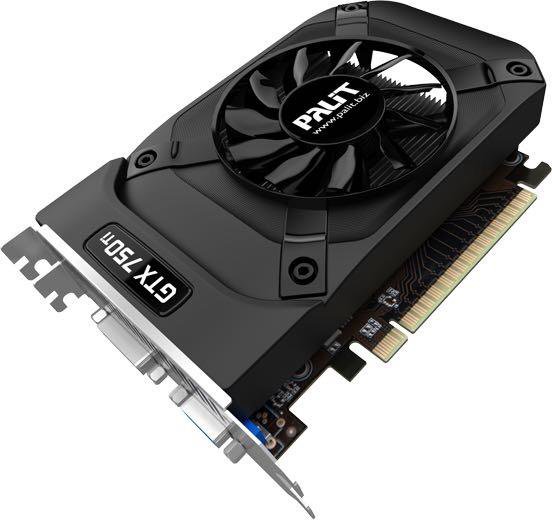 19 GB / s 19 GB / s |
|
| Memory bus width | 128 Bit | |
| Memory type | GDDR5 |
Navigation
Choose a GPU
Compare videocards
Compare NVIDIA GeForce GTX 1050 3 GB with others
NVIDIA
GeForce GTX 1050 3 GB
vs
NVIDIA
GeForce GTX 760 Ti OEM Rebrand
NVIDIA
GeForce GTX 1050 3 GB
vs
AMD
Radeon RX Vega M GH
NVIDIA
GeForce GTX 1050 3 GB
vs
NVIDIA
GeForce GTX 1650 (Laptop)
NVIDIA
GeForce GTX 1050 3 GB
vs
Intel
UHD Graphics P750
NVIDIA
GeForce GTX 1050 3 GB
vs
NVIDIA
Quadro T1200 Mobile
NVIDIA
GeForce GTX 1050 3 GB
vs
Intel
Arc A380
Compare NVIDIA GeForce GTX 1050 3 GB and NVIDIA GeForce GTX 750 v2
Comparative analysis of video cards NVIDIA GeForce GTX 1050 3 GB and NVIDIA GeForce GTX 750 v2 by all known characteristics in the categories: General information, Specifications, Video outputs and ports, Compatibility, dimensions, requirements, API support, Memory.
Video card performance analysis by benchmarks: GFXBench 4.0 — Car Chase Offscreen (Frames), GFXBench 4.0 — Car Chase Offscreen (Fps), GFXBench 4.0 — Manhattan (Frames), GFXBench 4.0 — Manhattan (Fps), GFXBench 4.0 — T-Rex (Frames ), GFXBench 4.0 — T-Rex (Fps), PassMark — G2D Mark, PassMark — G3D Mark.
NVIDIA GeForce GTX 1050 3 GB
versus
NVIDIA GeForce GTX 750 v2
Benefits
Reasons to choose NVIDIA GeForce GTX 1050 3 GB
- Newer graphics card, 2 year(s) 491 month(s) difference in release dates 902 cores 902 % more: 1392 MHz vs 1038 MHz
- Core clock in Boost mode 28% more: 1518 MHz vs 1188 MHz
- A newer technological process for the production of the video card allows it to be more powerful, but with lower power consumption: 14 nm vs 28 nm
- 40% faster memory clock: 7008 MHz vs 5012 MHz
- About 71% faster performance in GFXBench 4.
 0 — Car Chase Offscreen (Frames): 8368 vs 4890
0 — Car Chase Offscreen (Frames): 8368 vs 4890 - Performance in GFXBench 4.0 — Carps Offscreen benchmark ) about 71% more: 8368 vs 4890
| Release date | 21 May 2018 vs 17 November 2015 |
| Core frequency | 1392 MHz vs 1038 MHz |
| Boost core clock | 1518 MHz vs 1188 MHz |
| Process | 14 nm vs 28 nm |
| Memory frequency | 7008 MHz vs 5012 MHz |
| GFXBench 4.0 — Car Chase Offscreen (Frames) | 8368 vs 4890 |
| GFXBench 4.0 — Car Chase Offscreen (Fps) | 8368 vs 4890 |
Benchmark comparison
GPU 1: NVIDIA GeForce GTX 1050 3GB
GPU 2: NVIDIA GeForce GTX 750 v2
GFXBench 4.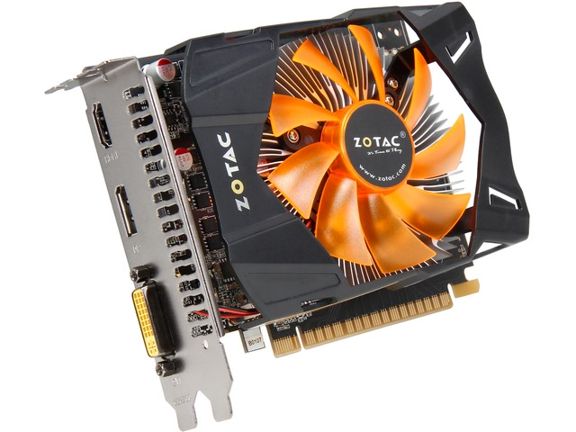 0 — Car Chase Offscreen (Frames) 0 — Car Chase Offscreen (Frames) |
|
|||
| GFXBench 4.0 — Car Chase Offscreen (Fps) |
|
| Name | NVIDIA GeForce GTX 1050 3 GB | NVIDIA GeForce GTX 750 v2 |
|---|---|---|
| GFXBench 4.0 — Car Chase Offscreen (Frames) | 8368 | 4890 |
GFXBench 4.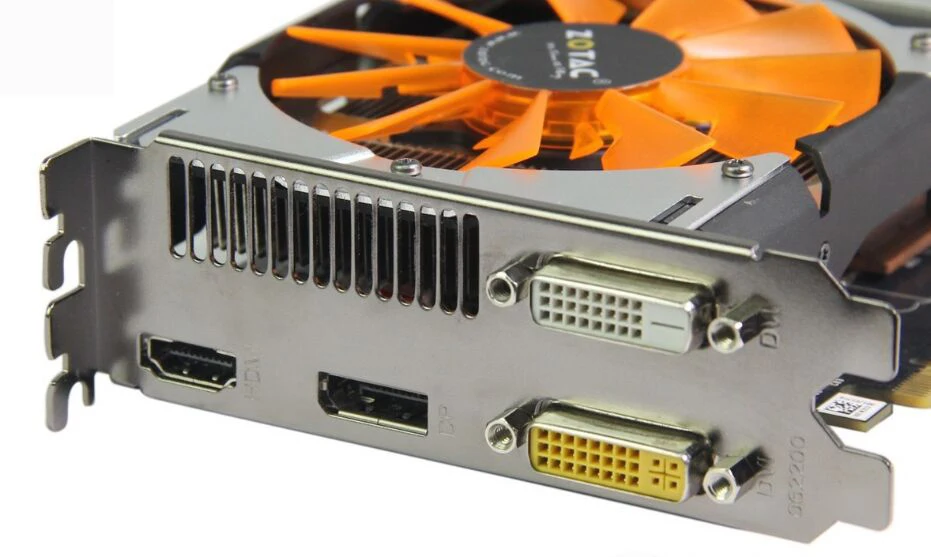 0 — Car Chase Offscreen (Fps) 0 — Car Chase Offscreen (Fps) |
8368 | 4890 |
| GFXBench 4.0 — Manhattan (Frames) | 3717 | |
| GFXBench 4.0 — Manhattan (Fps) | 3717 | |
| GFXBench 4.0 — T-Rex (Frames) | 3356 | |
| GFXBench 4.0 — T-Rex (Fps) | 3356 | |
| PassMark — G2D Mark | 687 | |
| PassMark — G3D Mark | 5185 |
Performance comparison
| NVIDIA GeForce GTX 1050 3 GB | NVIDIA GeForce GTX 750 v2 | |
|---|---|---|
| Architecture | Pascal | Maxwell 2. 0 0 |
| Codename | GP107 | GM206 |
| Production date | 21 May 2018 | November 17, 2015 |
| Place in the ranking | 260 | 389 |
| Type | Desktop | Desktop |
| Boost core clock | 1518 MHz | 1188 MHz |
| Core frequency | 1392 MHz | 1038MHz |
| Process | 14nm | 28nm |
| Power consumption (TDP) | 75 Watt | |
| Number of transistors | 3,300 million | 2,940 million |
| Floating point performance | 1. 217 gflops 217 gflops |
|
| Number of shaders | 512 | |
| Texturing speed | 38.02 GTexel/s | |
| Video connectors | 1x DVI, 1x HDMI, 1x DisplayPort | No outputs |
| Interface | PCIe 3.0 x16 | PCIe 3.0 x16 |
| Length | 145mm | |
| Additional power connectors | None | |
| DirectX | 12.0 (12_1) | 12. |
| OpenGL | 4.6 | 4.6 |
| Memory frequency | 7008MHz | 5012MHz |
| Maximum memory size | 2GB | |
| Memory bandwidth | 80.19 GB/s | |
| Memory bus width | 128 Bit | |
| Memory type | GDDR5 |
specs and benchmarks in 23 games and 11 benchmarks
NVIDIA started selling the GeForce GTX 750 Ti on February 18, 2014 for a suggested retail price of $149. This is a desktop graphics card based on Maxwell architecture with a 28 nm process technology. It has 2 GB of GDDR5 memory with a frequency of 1350 MHz, a 128-bit bus, which provides a bandwidth of 54 Gb / s.
The card occupies 1 slot, connected via PCIe 3.0 x16 interface. The length of the reference version is 145 mm. The card does not require additional power supply, the declared maximum power consumption is 60 W.
Specifications
GPU
- GPU Name
- GM107
- GPU option
- GM107-400-A2
- Architecture
- Maxwell
- Manufacturer
- TSMC
- Process
- 28 nm
- Number of transistors
- 1870 million
- Crystal area
- 148 mm²
Graphic card
- Release date
- February 18, 2014
- Generation
- GeForce 700
- Predecessor
- GeForce 600
- Descendant
- GeForce 900
- Launch price
- $149
- Market price
- $279
- Data bus interface
- PCIe 3.
0 x16
Frequencies
- Base frequency
- 1020 MHz
- Boost frequency
- 1085 MHz
- Memory frequency
- 1350 MHz
Memory
- Memory capacity
- 2 GB
- Memory type
- GDDR5
- Memory bus
- 128 bit
- Memory speed
- 54 Gb/s
- Memory bandwidth
- 86.40 GB/s
Render configuration
- Shader units
- 640
- Texture blocks
- 40
- Raster blocks
- 16
- Streaming Multiprocessors
- 5
- L1 cache
- 64 KB
- L2 cache
- 2MB
Rated output
- Pixel fill rate
- 17.
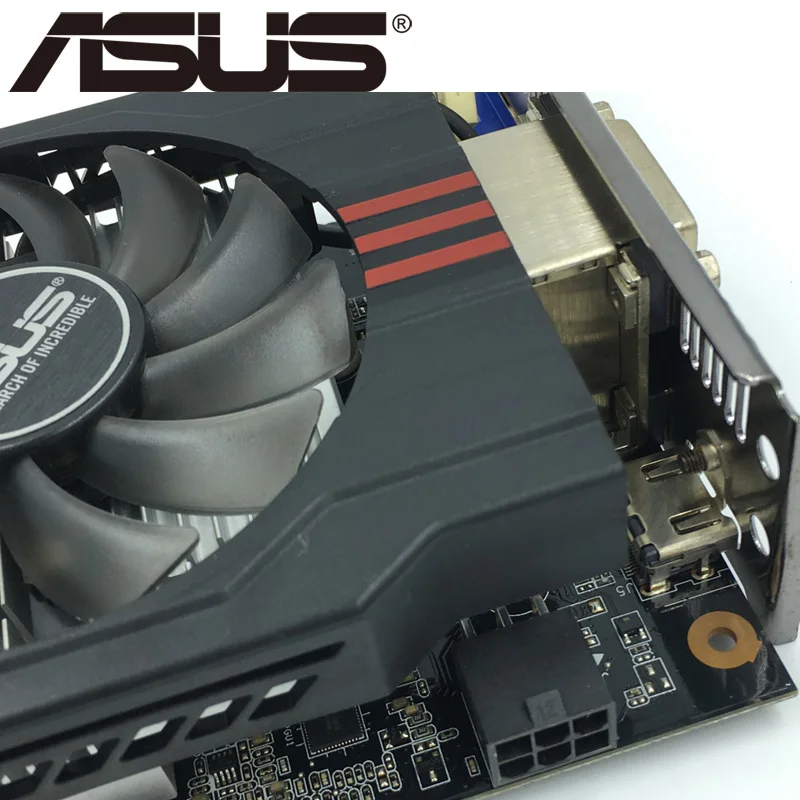 36 GP/s
36 GP/s
- Texture Fill Rate
- 43.40 GT/s
- Performance FP32
- 389 GFlops
- Performance FP64
- 43.4 GFlops
Graphics
- DirectX
- 12 (11_0)
- OpenGL
- 4.6
- OpenCL
- 1.2
- Vulcan
- 1.1
- CUDA
- 5
- Shader model
- 5.1
Video card design
- Occupied slots
- 1
- Length
- 145 mm
- Heat Sink Requirements
- 60 W
- Recommended PSU power
- 250 W
- Outlets
- 2x DVI 1x mini-HDMI
- Additional power supply
- Not required
- Board number
- P2010 SKU 50
- Maximum temperature
- 65 °C
- Maximum noise
- 39 dB
Game FPS
Assassin’s Creed Valhalla
(2020)
Better than NVIDIA GeForce GTX 760M, but worse than AMD Radeon HD 6950.
|
1920×1080 / Ultra / 10.9 |
2560×1440 / Ultra / 9.4 |
3840×2160 / Ultra / 6.4 |
Valorant
(2020)
Better than NVIDIA GeForce GTX 760M, but worse than AMD Radeon HD 6950.
|
1920×1080 / Ultra / 47.7 |
2560×1440 / Ultra / 39.0 |
3840×2160 / Ultra / 33. |
Death Stranding
(2020)
Better than NVIDIA GeForce GTX 760M, but worse than AMD Radeon HD 6950.
|
1920×1080 / Ultra / 21.6 |
2560×1440 / Ultra / 16.8 |
3840×2160 / Ultra / 10.2 |
Cyberpunk 2077
(2020)
Better than AMD Radeon HD 6950, but worse than NVIDIA GeForce GTX 1050 Max-Q.
|
1920×1080 / Ultra / 10.9 |
2560×1440 / Ultra / 10. |
3840×2160 / Ultra / 6.7 |
Apex Legends
(2019)
Better than AMD Radeon HD 6850, but worse than NVIDIA GeForce GTX 660M.
|
1920×1080 / Ultra / 18.0 |
2560×1440 / Ultra / 13.4 |
3840×2160 / Ultra / 8.0 |
Metro Exodus
(2019)
Better than AMD Radeon HD 6950, but worse than AMD Radeon HD 6950.
|
1920×1080 / Ultra / 13. |
2560×1440 / Ultra / 10.2 |
3840×2160 / Ultra / 6.4 |
Red Dead Redemption 2
(2019)
Better than AMD Radeon HD 6950, but worse than NVIDIA GeForce GTX 650 Ti Boost.
|
1920×1080 / Ultra / 11.2 |
2560×1440 / Ultra / 9.1 |
3840×2160 / Ultra / 5.8 |
PlayerUnknown’s Battlegrounds
(2017)
Better than AMD Radeon R9 280, but worse than NVIDIA GeForce GTX 780M.
|
1920×1080 / Ultra / 30.0 |
2560×1440 / Ultra / 23.0 |
3840×2160 / Ultra / 13.0 |
Grand Theft Auto V
(2015)
Better than AMD Radeon RX 570 Mobile, but worse than AMD Radeon R9M290X.
|
1920×1080 / Ultra / 35.3 |
Counter-Strike: Global Offensive
(2012)
Better than NVIDIA GeForce GTX 760M, but worse than AMD Radeon HD 6950.
|
1920×1080 / Ultra / 69.6 |
2560×1440 / Ultra / 58.0 |
3840×2160 / Ultra / 52.2 |
League of Legends
(2019)
Better than NVIDIA GeForce GTX 760M, but worse than AMD Radeon HD 6950.
|
1920×1080 / Ultra / 130.5 |
2560×1440 / Ultra / 72.5 |
3840×2160 / Ultra / 29. |
Battlefield 4
(2013)
Better than NVIDIA GeForce GTX 965M, but worse than NVIDIA GeForce GT 1030.
|
1024×768 / Low / 162.3 |
1366×768 / Medium / 116.3 |
1366×768 / Tall / 81.8 |
1920×1080 / Ultra / 33.3 |
Metro: Last Light
(2013)
Better than AMD Radeon R9 390X, but worse than NVIDIA GeForce GTX 760.
|
1024×768 / Low / 123.6 |
1366×768 / Medium / 103 |
1366×768 / Tall / 58.8 |
1920×1080 / Ultra / 30.9 |
BioShock Infinite
(2013)
Better than NVIDIA GeForce GTX 1050 Ti Mobile, but worse than AMD Radeon R9 M290X.
|
1280×720 / Low / 233.3 |
1366×768 / Medium / 140 |
1366×768 / Tall / 122. |
1920×1080 / Ultra / 46.7 |
Crysis 3
(2013)
Better than NVIDIA GeForce GTX 780M, but worse than NVIDIA Quadro K5100M.
|
1024×768 / Low / 133.8 |
1366×768 / Medium / 81.9 |
1366×768 / Tall / 54.3 |
1920×1080 / Ultra / 20.4 |
Alien: Isolation
(2014)
Better than NVIDIA GeForce GTX 770M, but worse than AMD Radeon R9 280X.
|
1024×768 / Low / 196.3 |
1366×768 / Medium / 129 |
1920×1080 / Tall / 65 |
1920×1080 / Ultra / 46.2 |
Middle-earth: Shadow of Mordor
(2014)
Better than NVIDIA GeForce GTX 765M, but worse than NVIDIA GeForce GTX 760.
|
1280×720 / Low / 126.4 |
1920×1080 / Tall / 43. |
1920×1080 / Ultra / 29.2 |
7680×4320 / Medium / 76.4 |
7680×4320 / Medium / 76.4 |
Tomb Raider
(2013)
Better than NVIDIA GeForce GTX 1060 Mobile, but worse than NVIDIA Quadro M2000M.
|
1024×768 / Low / 347.4 |
1366×768 / Medium / 179.3 |
1366×768 / Tall / 109. |
1920×1080 / Ultra / 49.5 |
The Sims 4
(2014)
Better than NVIDIA Quadro K3100M, but worse than AMD Radeon RX 560X Mobile.
|
1024×768 / Low / 172.5 |
1366×768 / Medium / 94.8 |
1920×1080 / Tall / 71.9 |
1920×1080 / Ultra / 63 |
Thief
(2014)
Better than NVIDIA GeForce GTX 965M, but worse than NVIDIA GeForce GTX 960M.
|
1024×768 / Low / 91.9 |
1366×768 / Medium / 63.2 |
1366×768 / Tall / 53.4 |
1920×1080 / Ultra / 27.6 |
Wolfenstein: The New Order
(2014)
Better than NVIDIA GeForce GTX 870M, but worse than NVIDIA GeForce GTX 780 Ti.
|
1280×720 / Low / 60 |
1280×720 / Medium / 60 |
1920×1080 / Tall / 58. |
The Elder Scrolls Online
(2014)
Better than NVIDIA GeForce GTX 680, but worse than NVIDIA GeForce GTX 760.
|
1024×768 / Low / 99.1 |
1366×768 / Medium / 97.1 |
1366×768 / Tall / 85.1 |
1920×1080 / Ultra / 44 |
Hitman: Absolution
(2012)
Better than NVIDIA GeForce GTX 1070 Mobile, but worse than NVIDIA GeForce GTX 780 Ti.
|
1024×768 / Low / 95.4 |
1366×768 / Medium / 89.2 |
1366×768 / Tall / 57.8 |
1920×1080 / Ultra / 27.1 |
Benchmark tests
3DMark Cloud Gate GPU: 31349 Better than NVIDIA GeForce GTX 870M, but worse than AMD Radeon HD 7970M.
3DMark Cloud Gate Standard Score: 17949 Better than NVIDIA Quadro M4000M, but worse than NVIDIA GeForce GTX 965M.
3DMark Fire Strike Graphics: 4294 Better than NVIDIA T500 Laptop GPU, but worse than NVIDIA GeForce GTX 960M.
3DMark Fire Strike Score: 4022 Better than NVIDIA GeForce MX350, but worse than AMD Radeon RX 480 Mobile.
3DMark Vantage P: 21608 Better than NVIDIA GeForce GTX 680M, but worse than AMD Radeon HD 7970M.
3DMark11 P: 5741 Better than AMD Radeon Pro 560 but worse than AMD Radeon RX Vega 8 (Ryzen 4000).
3DMark11 P GPU: 5378 Better than AMD FirePro M6100 but worse than AMD Radeon Pro 455.
Octane Render OctaneBench: 35 Better than NVIDIA GeForce GTX 870M, but worse than NVIDIA Quadro K5000.
Passmark: 3929 Better than AMD Radeon RX 5500M, but worse than NVIDIA Quadro K5000.
Unigine Heaven 3.0: 54.3 Better than NVIDIA Quadro M2000M, but worse than AMD Radeon HD 8970M.
Unigine Heaven 4.

 2
2
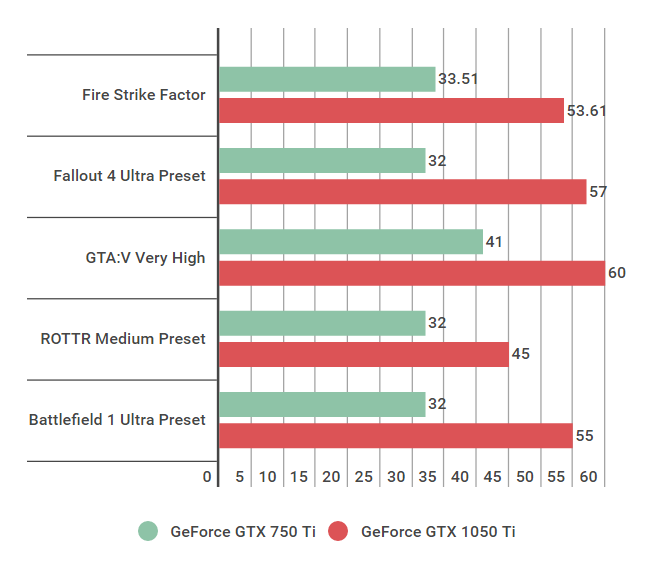 0
0
 9
9